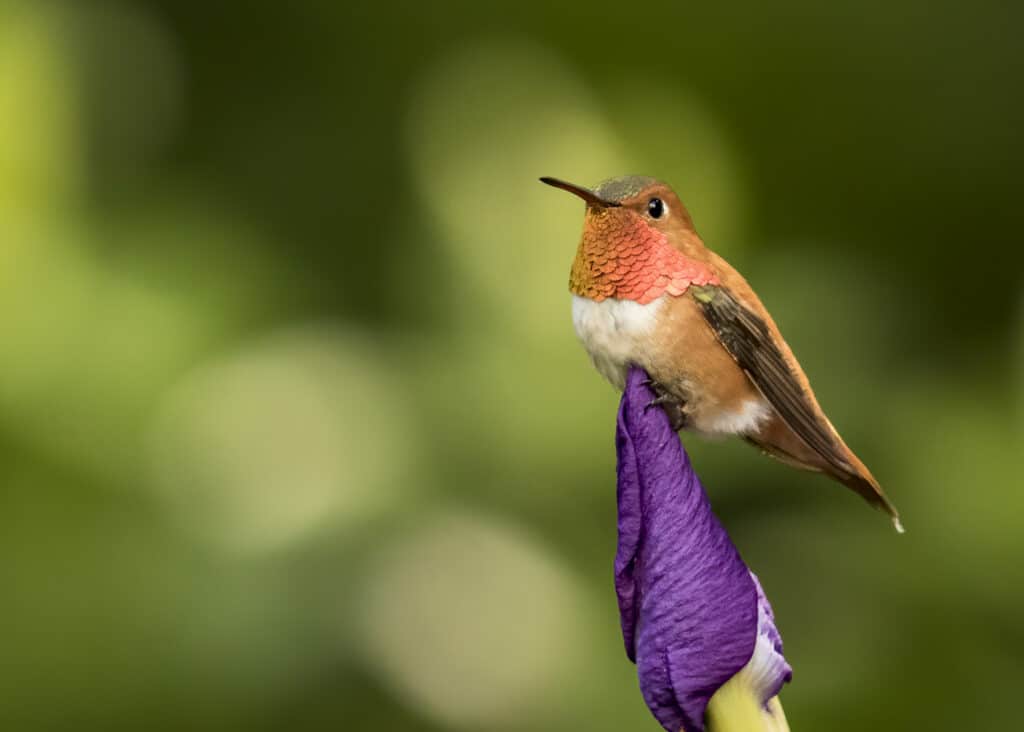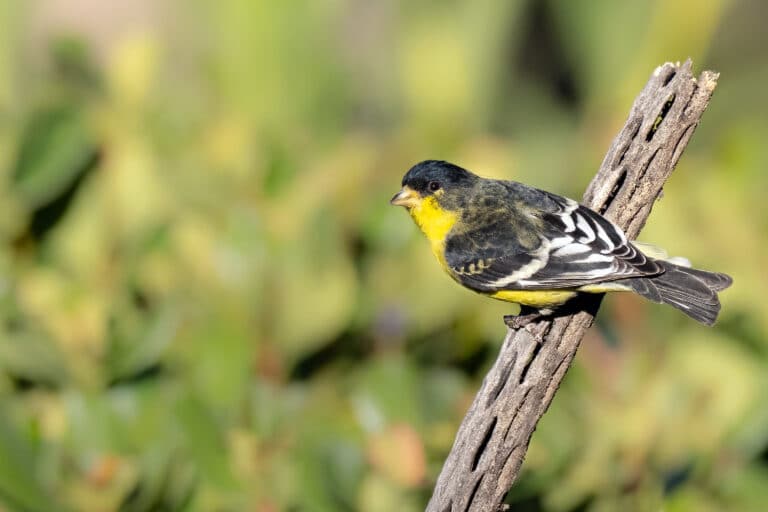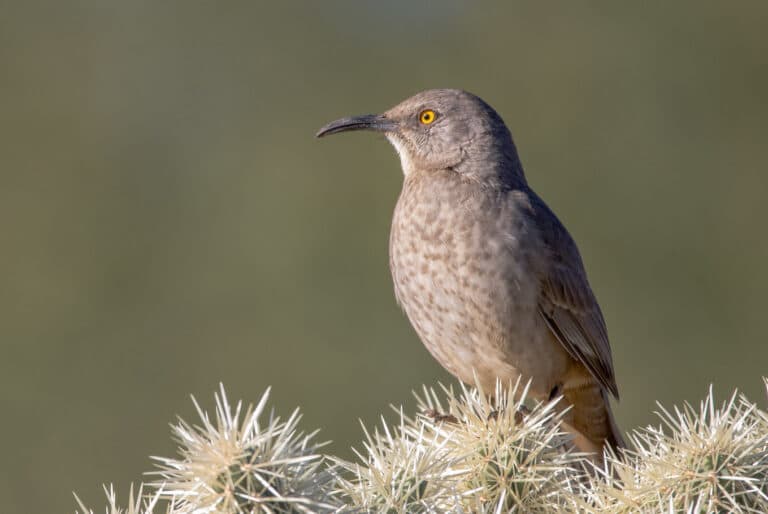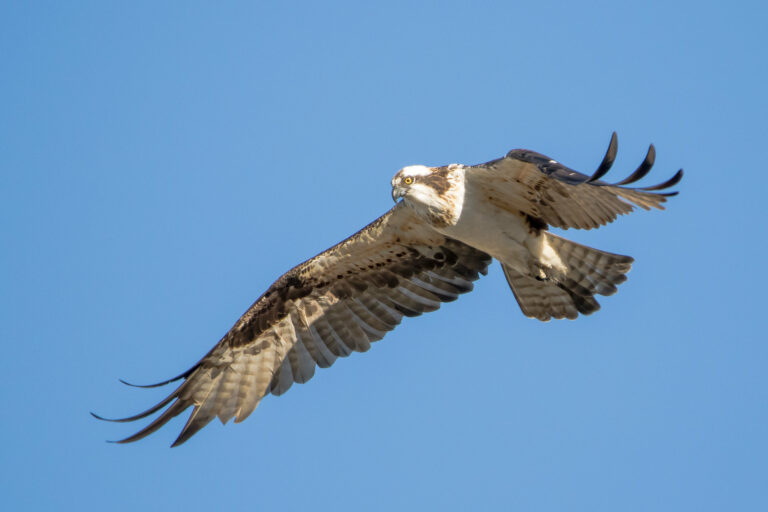If you’re growing a little tired of the usual colorful birds of Southeast Arizona (is that even possible?), be on the lookout for a new addition to the local rainbow. Superstars of the bird world, Rufous Hummingbirds move through the region on their astounding migration journeys every spring and late summer. These deep, rusty-orange jewels undertake one of the longest migrations of any bird as measured by body size: 78,470,000 body lengths for its 4,000 mile round trip between Mexico and Alaska. Another migration champion, the Arctic Tern’s 11,000 mile journey is only 51,430,000 body lengths. This hummingbird’s circular route is engineered to take advantage of the flowering bounty of the west—most of the population moves north along the coast to feed on spring wildflowers and returns south through the interior mountain ranges for the high elevation flowers of summer. Surprisingly, even after making this incredible flight and all throughout it, the Rufous Hummingbird still has enough energy to be one of the most aggressive hummingbirds in North America, routinely chasing off species twice its size. I witnessed this for myself one year when a male Rufous spent two days in my yard feeding on chuparosa flowers and dominating the resident Anna’s and Broad-bills.
The Rufous Hummingbird breeds the farthest north of any hummingbird, from the Pacific Northwest to Alaska, and increasingly it is found as a fall and winter vagrant on the east coast, farther afield than any other hummingbird. It is a complete migrant; the whole population spends winters along the southern Mexican west coast. This makes the Rufous a model species for studying hummingbird migration—birds observed in the migration corridor can’t be confused with local breeders because there are none.
Identifying Rufous Hummingbirds is easy unless you’re in the southern half of California during migration—this is the time their range overlaps with that of the nearly identical Allen’s Hummingbird. Most adult male Rufous have an entirely rufous back, but some do have green backs just like Allen’s, and females and juveniles of the two species are only identifiable in the hand or by photos of tail feathers.
Find Rufous Hummingbirds now through September almost anywhere in Southeast Arizona, from the mountain tops to your own yard! Listen for the trilling sounds their wings make in flight (slightly lower pitched than that of Broad-tailed Hummingbirds), and take a moment to reflect on this incredible little bird.




